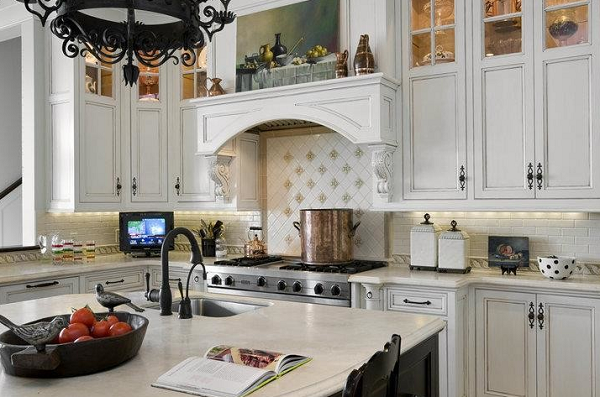Luxe Energy-Efficient Kitchen Appliances for your Passive Kitchen
Sustainable homeowners are smart homeowners. After all, wouldn’t you rather spend your money on a weekend getaway or a fun day out with your family than waste it on your electrical bill? Upgrading to energy-efficient appliances in your kitchen can mean less waste, less resources consumed, more peace of mind, and more money in your pocket.
Luxe energy-efficient appliances are more prevalent than ever, and these advancements in technology have changed the way we can use energy in the kitchen. Here are some of our tips for finding the right energy-efficient appliances in order to achieve a high-end, low consumption kitchen.
When picking out your energy-efficient refrigerator, it’s important to consider size and configuration. A fridge that is too packed full will have to work harder and will consume extra energy while a fridge that is too large will be working to cool empty space. Usable space, which is based on the refrigerator’s configuration, plays an important role in energy consumption, as well. Side-by-side models, for example, use 20 percent more electricity than other layouts with an average 63 percent usable space. Top freezer models, on the other hand, average about 80 percent usable space.
Gas cooktops and ranges require either electricity or natural gas. Electricity is generated from one of the biggest contributors to greenhouse gases – coal – and also loses about 70 percent of power during transmission. Renewable energy such as solar roof panels, however, can be used to power electrical appliances. Natural gas is relatively efficient and is a cleaner fuel with 45 percent less emissions than coal. The real star of energy-efficient cooktops is the magnetic induction cooktops. Using high-tech magnetism, heat is transferred directly to pans instead of just being emitted beneath them as with electric and gas appliances.
If one small oven will not meet your needs, opt for two small ovens instead of one large oven. This is an effective solution for minimizing energy used during daily cooking while still giving yourself the capacity when you need it. Convection ovens, which use fans to circulate heat around food, allow you to reduce cooking times and temperatures to conserve 20 percent more energy. Ovens with self-cleaning features often have more insulation for higher efficiency.
Energy Star-rated appliances will minimize energy consumption. Since exhaust hoods are critical to minimizing moisture and pollutants, it’s best not to skimp. Avoid re-circulating fans and downdraft hoods and go with an Energy Star hood that exhausts to the exterior and uses 65 percent less energy. Energy Star-rated dishwashers are 10 percent more efficient. You can additionally look for one that is known to use less water and has different wash cycles to choose from such as no-heat drying. Since microwaves are already energy-savers in themselves, we recommend simply going with a model without a glass door to decrease emissions.
Browse the TMS Architects portfolio to see samples of our sustainable, passive, and energy-efficient home designs. Contact us by calling 603-436-4274 for more information about our full-service design and architecture services.

